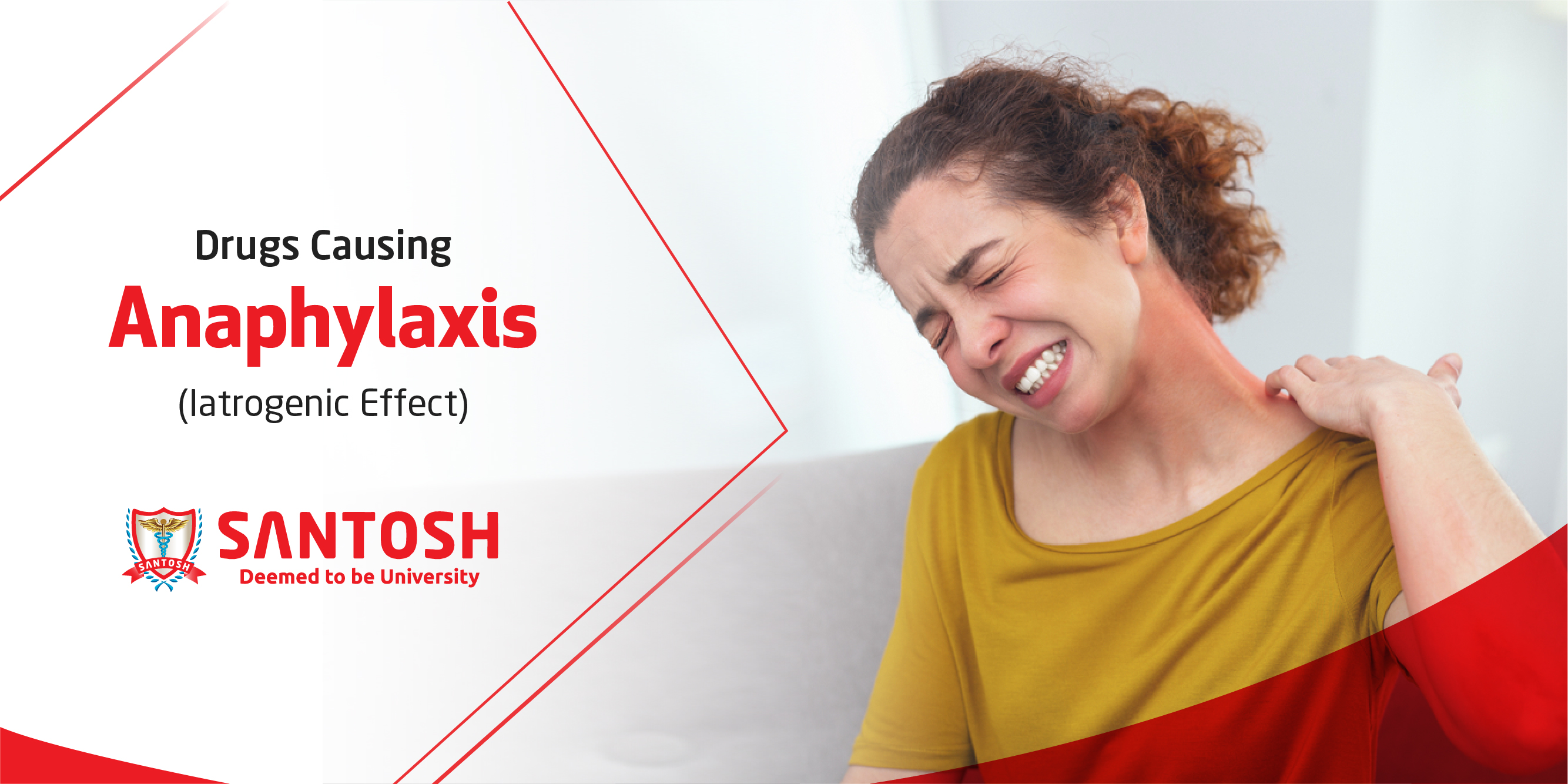
DRUGS CAUSING ANAPHYLAXIS (IATROGENIC EFFECT)
One of the iatrogenic effects of drugs which can be fatal is anaphylaxis.Anaphylaxis is a serious and life-threatening consequence of a drug administration.Anaphylaxis is a type 1 kind of allergic reaction, which occurs within seconds to minutes after drug administration, and involves 2 or more than 2 systems of the body and can be life threatening if not treated promptly and effectively.
Symptoms of ‘anaphylaxis’ are –
1.Skin – flushing, rashes with itching(urticaria)
2.Gastrointestinal- Nausea and vomiting, diarrhoea
3.Cardiovascular- angioedema (swelling of lips and ora mucosa), syncope(hypotension),
palpitation
4.Respiratory- breathlessness, wheezing (bronchospasm) and Respiratory arrest
There are 2 pathophysiological mechanisms of anaphylaxis-
1.Immunological-
can be IgE dependent or IgE independent.
IgE dependent pathway- there occurs activation of sensitised TH2cells (T helper cells) inducing binding of drug specific IgE to FcERI receptor on mast cells and basophils leading to degranulation and release of chemical mediators like histamine, tryptase, PAF, leukotrienes which finally cause symptoms of anaphylaxis.
Drugs causing anaphylaxis by this pathway are-
Penicillin and other Beta lactam antibiotics.
Neuromuscular blocking agents- Rocuronium, Succinylcholine.
IgE independent pathway-
This is mediated by IgG antibodies specific to drug. Whenthe drug enters the body specific IgG antibodies bind to FcrRIII receptor, activates complement system and causes release of mediators like PAF etc by basophils, macrophages or neutrophils causing anaphylaxis.
Drugs causing anaphylaxis by this pathway-
Radiocontrast media, Dextran,Gelatin
NSAIDS (Diclofenac, Paracetamol)
Proton pump inhibitors – Lansoprazole, Pantoprazole
Barbiturates, opioids (codeine, morphine)
Chlorhexidine
2.Non-Immunological
There occurs direct stimulation of mast cells by drug causing degranulation and thus release of anaphylaxis causing mediators i.e. histamine, PGD2, TNF.
Drugs causing anaphylaxis by this pathway-
Quinolones, Opioids, Vancomycin
Dextrans, Radiocontrast media, Neuromuscular blocking agents
Management of patient in anaphylaxis-
5.H1antihistaminic (Chlorpheniramine) is given 10-20mg by slow i/v infusion or i/m
6.i/v Glucocorticoid (Hydrocortisone)200mg is given for severe, refractory case followed by oral prednisolone for 3days.
7. Serum Tryptase levels are checked which remain high till 5-6hrs after onset of anaphylaxis. Histamine metabolites are detected in urine. Later on, Skin Prick test/Patch test is done to know the offending drug. Immunocap specificIgE level can be done to know the drug causing anaphylaxis.